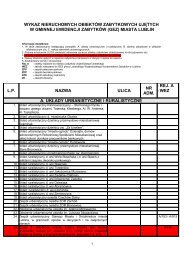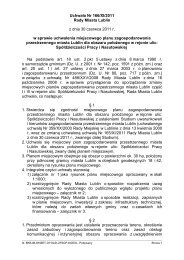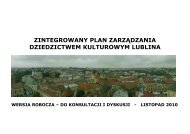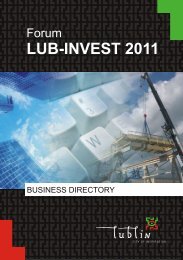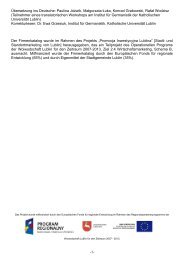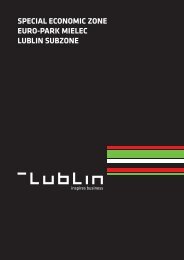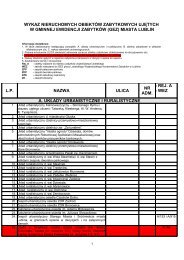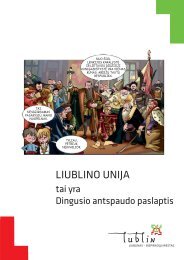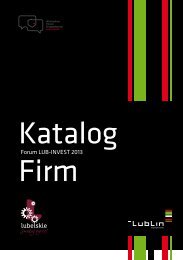The URBACT II Programme 2007 - 2013 - Lublin
The URBACT II Programme 2007 - 2013 - Lublin
The URBACT II Programme 2007 - 2013 - Lublin
Create successful ePaper yourself
Turn your PDF publications into a flip-book with our unique Google optimized e-Paper software.
Final Application Form TN <strong>URBACT</strong> <strong>II</strong><br />
tion. <strong>The</strong> challenge for the historic centre is to maintain and manage<br />
the achieved improvement.<br />
Concerning “visual integrity” the main chalenges are:<br />
Physical deterioration of the historic buildings because often<br />
low-income households own and in-habit these buildings lacking<br />
the financial resources for the rehabilitation work.<br />
Concerning “Integrated revitalisation/ balancing the needs” the<br />
main challenges are:<br />
Involvement of stakeholders in the process;<br />
Lack of recreational and green areas;<br />
Loss of positive image and identity;<br />
Diversification of uses in historic urban landscapes, converting<br />
historic buildings into attractive areas for economic and social<br />
activities;<br />
Change of the neighbourhoods into leisure centres where residential<br />
use becomes a secondary use;<br />
Danger of development of ghettos due to immigration of (illegal)<br />
foreigners with low-income and increasing delinquency.<br />
Valencia will contribute its profound experience in:<br />
Protecting the visual integrity through special funds and plans;<br />
Integration of new architecture in the historic urban landscape;<br />
Rehabilitation and adapting functions/ uses of (public) historic<br />
buildings;<br />
Rehabilitation of public space;<br />
Grant scheme to incite and support private rehabilitation measures;<br />
Community participation;<br />
Introducing social infrastructure in historic neighbourhoods;<br />
Social housing (balancing the rent in historic neighbourhoods);<br />
Methodology to evaluate possible impacts of new uses on the<br />
historic building and the urban environment;<br />
PP9 Valletta Valeta’s rich architecturalfabric provides sample scope and opportunity<br />
for restoration and adaptive re-use. <strong>The</strong> conflict between<br />
the preservation needs of the cultural heritage assets/ fabric and<br />
the development needs is symptomatic. This lies in the very<br />
densely populated area inhabited predominantly by a commuter<br />
society; a city state, which is an administrative and economic hub<br />
and the geographic and morphological conditions.<br />
Concerning “visual integrity” the main chalenges are:<br />
Owners extend their historic buildings with building extensions/<br />
top mounting;<br />
Historic buildings in need for rehabilitation, but inhabitants are<br />
often low-income households and/ or predominantly aged (60+;<br />
aging society);<br />
new architecture proposals which do not respect the historic fabric<br />
and landscape.<br />
Concerning “Integrated revitalisation/ balancing the needs” the<br />
17




